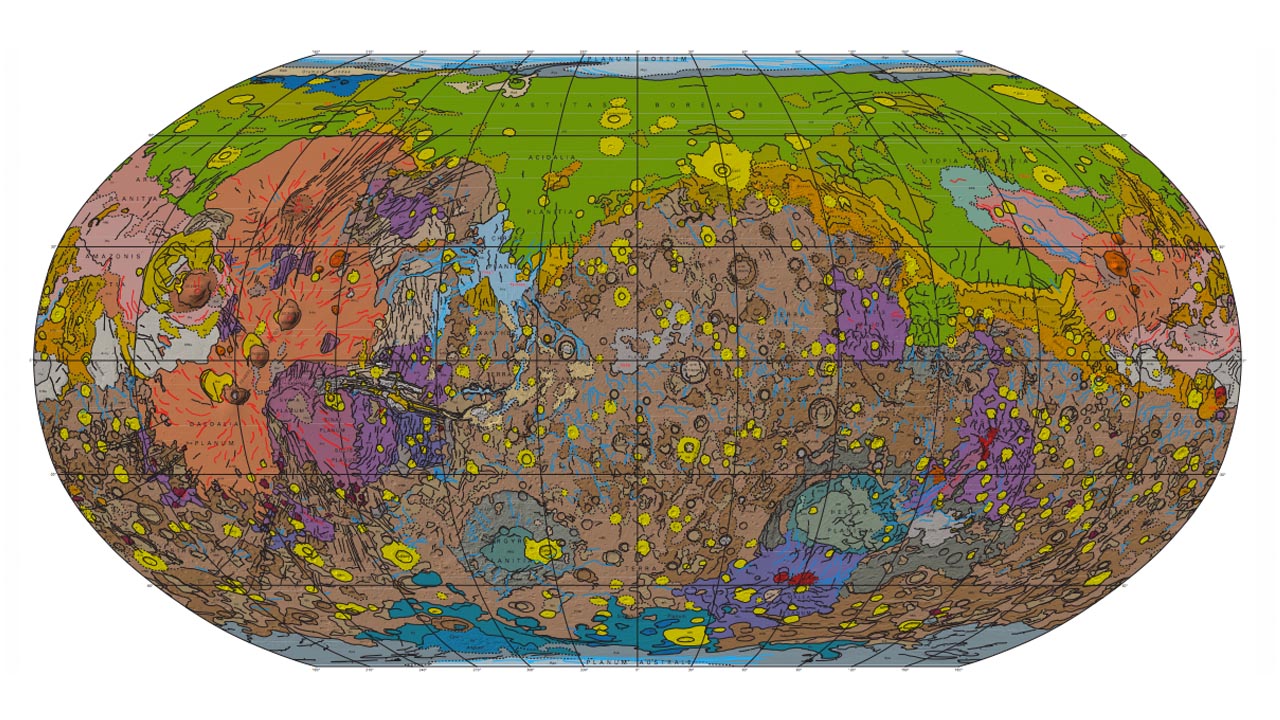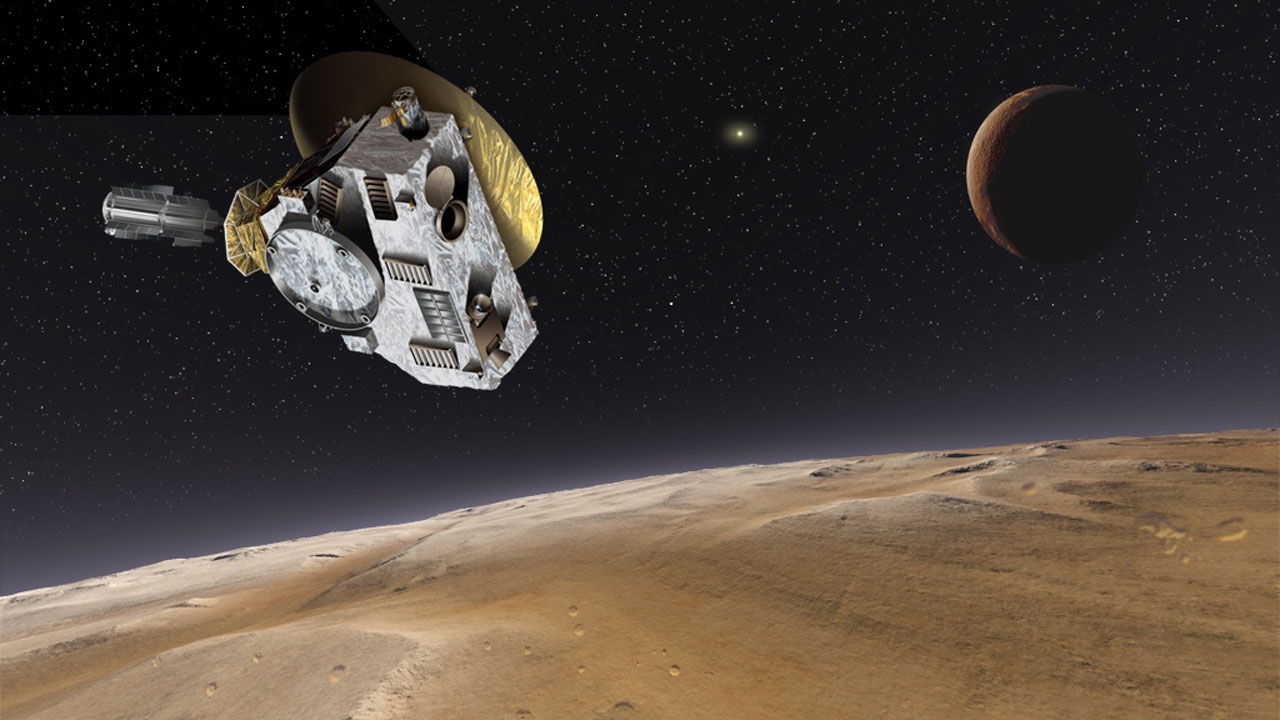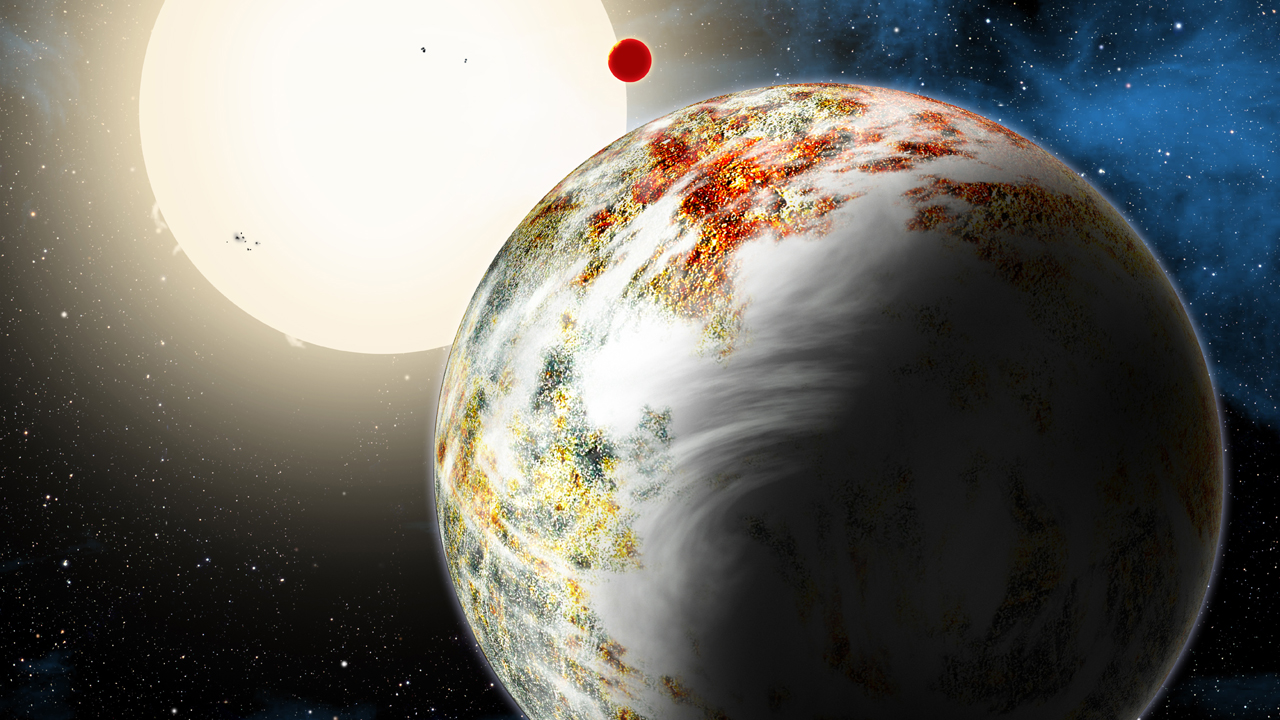Tag: SPACE
Japanese artist Azuma Makoto has strapped six GoPro cameras to balloons carrying plants — like a a fifty-year-old bonsai tree — and launched them into space for his project Exobiotica. The resulting documentation is stunning and surreal, with photos of earthly organisms suspended above our atmosphere. The artist, who works in interweaving biological and human design, encountered a few technical difficulties […]
A new map of Mars produced by the US Geological Survey (USGS) is the most detailed yet, revealing new nuances about the planet previously unknown to science. The data was captured by three different spacecrafts — the Mars Global Surveyor, Mars Odyssey and the Mars Reconnaissance Orbiter. The colors of the crust represent various processes that created […]
The Earth’s magnetic field is weakening at ten times the speed scientists predicted, Wired UK reports. Fuckin’ magnetic fields, how do they work? Our magnetic field, created by the rotation of our molten metal core, is what protects life on Earth from harmful radiation spit out by the sun that would otherwise kill us all. It’s pretty […]
A small team of developers who defected from the big game companies, came together in 2008 to form Hello Games, and independent game developing team that created Joe Danger. Now, they’re about to release something more ambitious than what most studios ever accomplish. No Man’s Sky is an MMORPG that takes place in a realistic universe. There are […]
Astronomers at the University of New South Wales have discovered a new super-Earth orbiting near the Gliese 832 zone, Sci-News reports. It’s about 16 light-years away (94,055,997,000,000 miles) and about half the mass and radius of the Sun. Dubbed Gliese 832c, it’s neighbored by Gliese 832b, a cold Jupiter-like planet. “With an outer giant planet and an interior potentially rocky […]
NASA has approved an independent project that will allow a crowd-sourced message to be sent into space via the New Horizon’s space probe. When NASA’s New Horizons mission finishes studying Pluto next summer, the data will be streamed from Earth to the spacecraft to create a digital record. The New Horizons will then take with […]
According to a new study by the European Association of Geochemistry, the earth is 60 million years older than scientists have last estimated, give or take 20 million years. What does that mean for Neil Degrasse Tyson’s Cosmic Calendar? Science Daily explains: Guillaume Avice and Bernard Marty analysed xenon gas found in South African and Australian quartz, which had […]
Reid Weissman (@astro_reid) is an astronaut currently aboard the International Space Station with a penchant for documenting his voyage on Twitter. Weissman has recently made history by posting the first Vine ever taken in space — a compressed clip of one full orbit around the earth. In the Vine, the sun never sets, instead, it […]
Harvard-Smithsonian Center for Astrophysics (CfA) announced yesterday that they’ve discovered a “new” rocky planet 650 light-years away, spotted by NASA’s Kepler spacecraft. It is about 11 billion years old, circles a sunlike star once every 45 days and is all solid, “although it may possess a thin atmosphere shown here as wispy clouds” in the artist rendering above. […]
Ready to feel insignificant and small? Check out “If the Moon Were Only 1 Pixel,” a side-scrolling website that imagines our solar system if the moon were, yes, just one pixel in diameter. Josh Worth, the site’s creator, calls it a “tediously accurate scale model.” What do we learn? That our existence, drifting on a […]











